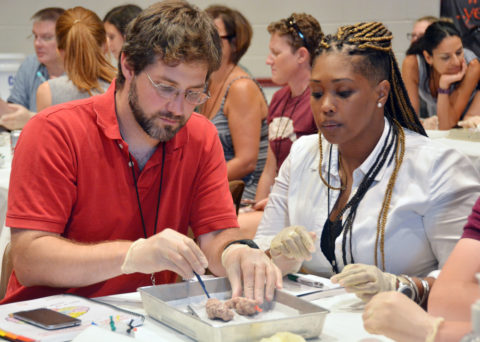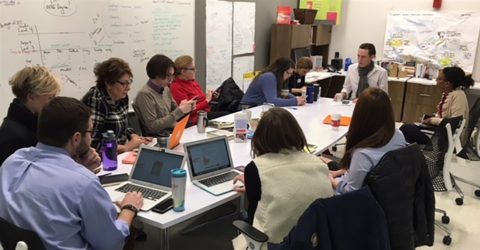From ideation to presentation, Center for Transformative Teaching & Learning (CTTL) Omidyar Teacher Research Fellow Daphne Clyburn applied Mind, Brain, and Education Science as she prepared to give a talk at a local conference last weekend.
Clyburn, who is Head of Foreign Language at St. Andrew’s Episcopal School in Potomac, Maryland, presented on neuroplasticity and key elements of the brain’s architecture as they relate to learning a language at the Greater Washington Association of Teachers of Foreign Languages Conference April 27.
She said she wanted to give this talk to start a dialogue among foreign language teachers on “how we can be better teachers if we better understand how the brain works.”
“It’s really easy to get caught up in the day-to-day of ‘I need to get my classes done, teach, grade, cover study hall,’ but I feel taking a step back and looking at our teaching is super important,” Clyburn said. “It’s hard to find time to do it, but we really need to push ourselves to grow as educators.”
She applied to present at the conference earlier this year and spent time workshopping her talk with Dr. Ian Kelleher, Head of Research for the CTTL. Personally, she said, the presentation was an opportunity to “extend” herself to other schools and encourage teachers to make stronger connections between language learning and Mind, Brain, and Education Science.
“Presenting is a really good way to challenge yourself to continue growing professionally,” Clyburn said. “In the same way we ask our students to synthesize an idea in an essay, in a presentation for a conference you have to pull your idea together in an engaging way to spark ideas and start dialogue.”
“It’s good for us to have that experience, that reminder, of what it feels like to push yourself to grow,” she added. “We ask our students to grow, so why shouldn’t we be doing the same?”
Clyburn planned her talk as if it were a classroom lesson, applying Mind, Brain, and Education Science strategies like flow and the primacy/recency effect to how she presented.
“People remember the beginning and the end of a class. People need primetime and downtime. There will be times when I am lecturing or putting stuff out there, but (students) need time for sharing ideas and processing them, too,” she said.
Clyburn recommends presenting at a local conference as a way to try out a new idea on a smaller sale before proposing a talk for a national conference. In fact, Clyburn will speak again on Mind, Brain, and Education Science in language learning this November at the American Council on the Teaching of Foreign Language Convention alongside Dr. Kelleher and CTTL Omidyar Teacher Fellow Sara Graham.




